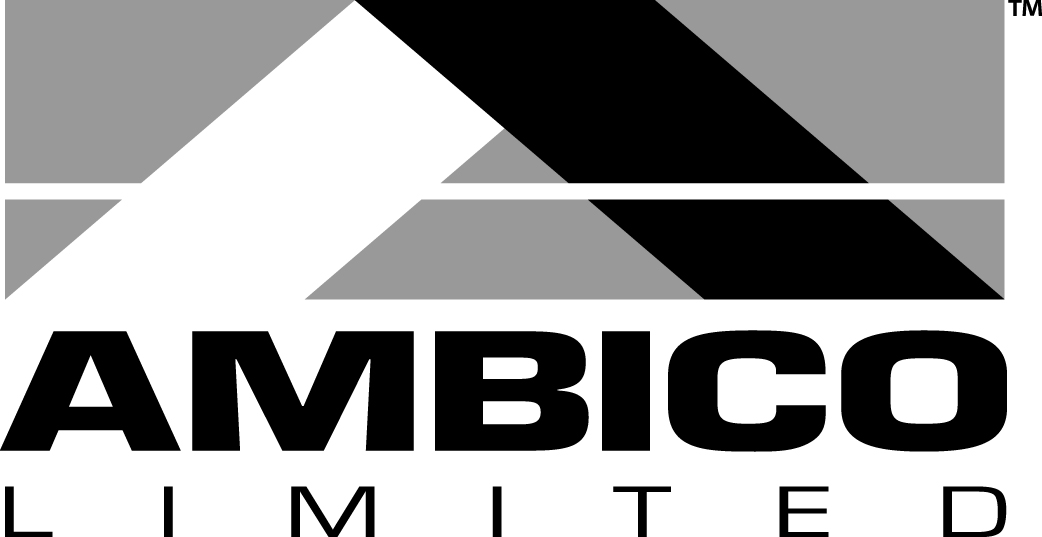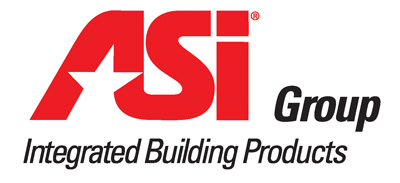This CE Center article is no longer eligible for receiving credits.
Key Terminology for Understanding Sound and Sound Ratings
Sound is measured in two ways: its loudness is measured in decibels (dB), and its frequency is measured in hertz (Hz). Combined, these two measurements are at the foundation of how sound management systems operate. But it’s a lot more complicated than just decibels and hertz, especially when it comes to specifying architectural materials that manage sound and noise within spaces.
Noise-reduction coefficient (NRC) is the measurement of how well a material absorbs sound, usually sounds in the range of normal speech frequencies. On products, NRC is usually measured at frequency octave ranges of 250, 500, 1000, and 2000 Hz, and those measurements identify how much a product will make a space quieter at that frequency ranges. Large spaces where sounds and noises are generated, such as gymnasiums, sports arenas, restaurants, or performance halls, will require a higher NRC on walls and ceilings to control the noise.
Sound transmission class (STC), on the other hand, measures how well a surface blocks sound from going through it, or how well a product keeps sounds from escaping a room. Spaces such as medical clinics, hospital rooms, or office conference rooms where private or sensitive information may be discussed will benefit from walls designed with high-STC products, as covered by the ASTM E90 standard.
Reverberation, or how long a sound continues to reflect off of hard surfaces within a space, is measured in reverberation time (RT). RT is measured as the time in seconds that it takes for the sound level to decay by 60 dB. From a practical standpoint, a long RT is responsible for situations where communication is garbled and difficult for listeners to understand, also known as speech intelligibility. Some spaces, such as classrooms, benefit from very short RTs (less than 0.6 seconds) in order to emphasize clarity and speech intelligibility, while others, such as performance halls and theaters, benefit from RTs of greater than 1.2 to help the sound fill the space.
Articulation class (AC) measures the attenuation, or how much sound energy is lost, of reflected sounds, such as speech over the top of wall partitions or furniture, and is measured according to ASTM E1110 and E1111. For example, high-performance AC is important in office areas that rely on cubicles. AC ceiling systems rated 150 or less are considered low performance, where systems that are rated 180 or greater are considered high performance.
A final acoustic performance measure is the Privacy Index (PI), which rates how well speech can be heard in and through architectural spaces, especially spaces such as hospitals and offices. Key PI levels are generally accepted to be 95 percent or higher for confidential speech privacy, 80 to 95 percent classifies as “nonintrusive” privacy, and anything below is accepted as poor or not private.
Acoustic Solutions for Sound Management and Aesthetics
In today’s market, there is a wide range of high-performance acoustic design solutions that address an equally wide range of acoustic challenges. We will cover different types, styles, and attributes of acoustic solutions, including shapes, sizes, and finishes, as well as the various materials and material properties of different acoustic solutions. This includes multilayered gypsum panels and textured sprays to glass, stainless steel, wood and steel doors with steel frames, and different types of ceiling tiles and baffles.
In addition to the practical aspects of new acoustic designs, the different products offer architects and designers a world of creative options for aesthetic flexibility. This flexibility extends from traditional ceiling and wall solutions to doors and doorframes, with an array of colors, shapes, sizes, and patterns available—all delivering high-performance acoustic control that improves the comfort and beauty of the space. In addition to the flexible products, recent advances in modular design offer almost unlimited possibilities for layout to best fit the required space. Other designs incorporate daylighting quality with their sound- and noise-control solutions, and many are fire rated to provide added safety within the space. We’ll take a look at each one now.
Stone Wool Ceiling Panels
Sound-absorbing ceiling systems can optimize acoustics and add to the comfort and aesthetic design of an indoor space. For projects where a creative, flexible look is desired, stone wool ceiling panels installed on specialty metal ceiling panel suspension systems can be a great choice and address some of the newer, stricter requirements in acoustic standards. As Acoustics Specialist Gary Madaras, Ph.D., of Rockfon notes, “A lot has changed in the acoustics realm recently, especially in regards to the stringency of both sound-absorption and sound-blocking requirements in the standards. Ceilings have to provide high sound absorption to meet shorter reverberation times, and full-height walls and heavy slabs are needed to provide privacy and prevent noise intrusion.”
For example, optimized acoustics in commercial interiors typically include high-performing sound absorption overhead, which helps protect materials from dirt and damage. Regardless of the interior, acoustic ceiling systems should not be seen as a way to compensate for the poor design of other building elements, such as floors, walls, and mechanical systems. A well-designed interior should meet the requirements for privacy between enclosed rooms, and mechanical systems should meet maximum permissible background noise levels: acoustic ceilings can be removed and replaced with different types of sound absorption.
Industry literature shows that an absorption performance level of NRC 0.90 or higher is required in workplaces and patient-care areas of health-care facilities. This minimum performance level has been adopted for open offices by some standards, guidelines, and building rating systems, such as The WELL Building Standard v1 and the U.S. General Services Administration’s (GSA) Facilities Standards for the Public Building Service (P100). The Center for Health Design establishes installing high-performance sound-absorbing ceiling tiles as a priority design recommendation based on its impact on safety, quality, and cost.
Not all spaces require this high level of sound absorption. Most ceiling manufactures provide multiple options within standard performance levels. The most important factor to remember when it comes to acoustic ceilings is that they are for sound absorption within spaces and too lightweight and porous to be effective at blocking sound.
Cementitious Wood Fiber Ceiling and Wall Panels
Acoustic ceiling and wall panels can be made from many different materials, each of which provide certain properties that can benefit an indoor environment. Cementitious wood-fiber offers an acoustical high-performance, ecofriendly option that is also cost-effective and provides additional thermal insulation to the space. As a material, cementitious wood-fiber is remarkably simple, with three key ingredients: managed source wood fibers, cement, and water. The finished panels are durable, fire rated, and low VOC, making them a safe and healthy option for interiors. Panels are also versatile in terms of size, shape, mounting options, and even paint options, which makes them easy to specify, and their thin design makes them easy to install.

Photo courtesy Acoustical Surfaces
Shown are ceiling and wall cementitious wood fiber panels.
As an acoustic solution, cementitious wood fiber panels provide designers with an aesthetically creative option that typically has a consistent finish and color as well as consistent thickness, square corners, and low-dust square panels. These panels are designed to effectively manage sound in larger spaces where noise is typically a challenge, such as in schools or civic centers—for example, in gymnasiums and classrooms, auditoriums, or music practice and band rooms. They are also an excellent option for commercial venues such as restaurants and bars, convention centers, and even “extreme noise” environments such as manufacturing and industrial facilities, among many other noisy, high-traffic spaces.
Sound-Reducing Drywall
Sound-reducing laminated gypsum drywall is an affordable, easy-to-install acoustic solution. The material can replace any standard drywall in either walls or ceilings, and it can use standard construction techniques to achieve high STCs. This is beneficial because it avoids the common issues of decoupling walls or difficult installation that contractors often face with some of the noise-control solutions; such problems tend to mean that the desired result is not achieved.
Sound-reducing gypsum panels can be cut and mounted like any other drywall panel, with the only real difference being that these panels are “internally damped” with constrained layer-damping layers inside. Different performance grades are available, including a standard 5/8-inch type X panel, which is the same size as standard drywall.
The combination of high performance, easy installation, and overall low cost works well for projects where time and budget are of key importance. As noted by Matthew Boersma of HerreroBOLDT Partners, “After completing our analysis, it was clear that sound-damping gypsum drywall would be the best solution to achieve the required STC performance, at the lowest cost, for the Cathedral Hill district campus. Additionally, using sound-damping gypsum drywall standardizes the wall dimension and reduces variability for other in-wall systems like doorframes and receptacle outlets.”
Acoustic Plasters and Perforated Gypsum Board
According to Howie Podolsky, general manager of Pyrok, in many interior spaces, “it is necessary to address mechanical system noise, sound transmission, impact noise, and sound-absorption issues. Too often, all four of these critical acoustic issues are not addressed.” Sound-absorption issues can be addressed with perforated gypsum boards with different perforation patterns that can be joint-taped to create high-performance, durable acoustic solutions or acoustic sprays. Two such sprays available are seamless, durable sound-absorbing wall and ceiling treatments constructed from hand-applied smooth and textured sprays. These sprays, made with a special sound-absorbing substrate comprised of recycled post-consumer glass, offer a sustainable, durable, safe, and healthy acoustic option that can have almost zero VOC content. Designers can use this product to achieve the look of a seamless gypsum board but with acoustic properties. The material can be used in whatever way gypsum boards are used, including curved surfaces and compound curves, with the advantage that no gypsum board substrate is required. Moreover, such products can be painted without losing any sound-absorbing qualities.
Another option is an acoustical plaster spray made with portland cement, and that can be applied to unpainted concrete masonry, galvanized metal deck, and structural steel. These plaster sprays can be used wherever a designer might otherwise use a decorative plaster finish, but they also absorb sound, are durable, and require very little maintenance. This combination of attributes provides architects and designers with aesthetic flexibility whether the interior is contemporary, traditional, or even a historical restoration. One benefit of the plaster spray is that it can be applied in different thicknesses depending on the desired acoustical result.
Acoustic Drywall Ceiling and Wall Systems
One way that designers can balance their aesthetic vision of a space with eventual occupant comfort is to include acoustics as a critical requirement very early in the project’s design process. Acoustic needs—and eventual solutions—should be considered a key design decision, just as important as materials, performance, and aesthetics. By addressing the issue of acoustics early in the process, designers can better plan for materials and products that best suit their budget and deadline needs as well.
For architects and designers seeking modern, monolithic ceilings, acoustics can be a genuine challenge. Sounds can easily bounce off of the surfaces, reverberating and echoing, thus making listening difficult. New advances in acoustical drywall ceilings, however, offer systems that can be sprayed to have a monolithic look, all while costing less and being far easier to install than acoustical plaster. These high-performance solutions can also provide high light-reflective finishes that can enhance interior lighting, thus reducing energy use.
Acoustic Luminaire and Baffle Systems
Acoustic linear luminaire and baffle systems combine noise control with lighting control. Linear luminaires, for example, can provide a modern look with ecofriendly and sound-absorbing housings. They are offered with direct, indirect, or both direct and indirect light distributions, thus ensuring not only improved acoustics within a space but also optimal illumination levels. With the integration of lighting controls, these acoustical lighting products can also reduce energy costs. Unlit acoustic baffles provide an aesthetic match to the lit baffles, adding to the overall flexibility to meet a project’s budget, aesthetic, lighting, and acoustic needs.
Acoustic luminaires and baffles can be used to create unique, project-specific aesthetics in conference rooms, offices, reception areas, and other open commercial spaces. The thin profiles of the acoustic baffles maximize illumination and minimize shadows. In addition to standard linear acoustic baffles, acoustic pendants can be used in larger interior spaces where noise may be a problem, such as in airport concourses, large lobbies and reception areas, or conference rooms and open workspaces. Acoustic pendants can be used in conjunction with lighting systems to create bright, comfortable, healthy, and coordinated interior spaces.
Folding and Opening Glass Walls
Glass walls can serve as excellent acoustic barriers when they are closed; however, such walls have traditionally been installed as permanent fixtures to a space. New designs in floor-supported folding glass walls, however, combine the modern aesthetic of acoustically separated aluminum framing and specialized gasketing with sound-enhanced glass. These new high-performing systems can achieve STC levels ranging from STC 35 to 45. Aside from the versatility of these glass walls, they provide educational and interior spaces with easy-to-create private rooms. The floor-supported steel framing, for example, makes opening and closing the walls easy for anyone to do.
While not all spaces benefit from a folding wall, another option is an all-glass opening wall that is engineered specifically for enhanced acoustical separation. Opening glass walls can turn larger spaces into on-demand smaller spaces, all while keeping the space visually open. Such walls can perform better than many all-glass fixed partitions, with STC ratings around 36 and outdoor-indoor transmissions class (OITC) of 30. All-glass opening walls can change the noisy nature of office spaces, banks, and schools with uninterrupted transitions between interior spaces.
Acoustic Door Assembly Products
As noted earlier, a space that requires high-performance acoustic management also needs to have carefully specified doors and doorframes. Both are critical elements in an acoustic space in that they not only block sound but also play a key role in fire safety. Two design solutions include acoustic steel and acoustic wood doors with steel frames.
Acoustic soundproof wood doors with steel-frame assemblies can provide an excellent solution to noise issues in buildings such as schools and health-care environments, where noisy corridors may distract people within spaces like classrooms, exam rooms, or patient-care rooms. In addition to the aesthetics of wood-faced doors, these doors and assemblies can provide the broadest range of STC ratings in the industry, all tested with ASTM E-90 and E-413, and fire rated up to 90 minutes. Heavy-gauge, pressed-steel frames and engineered perimeter- and bottom-seal frames help reduce unwanted noise.
At one time or another, we’ve all experienced an indoor environment where sound and noise weren’t properly managed, whether in a workplace, school, health-care facility, entertainment venue, or commercial space such as a restaurant or hotel. Whether the sound is too loud, too soft or muted, or too chaotic, the problems that poorly controlled sound and noise can cause for an indoor space are vast. Echoes, muffled sounds, lack of privacy—all of these can contribute to an unpleasant indoor experience, and in some cases the noise can impact the health, safety, and well-being of the building occupants. On the flip side, however, thoughtfully designed and specified acoustic solutions can make a world of difference: a carefully considered space designed to be acoustically appropriate can radically improve the indoor experience. But it can do more than just that.
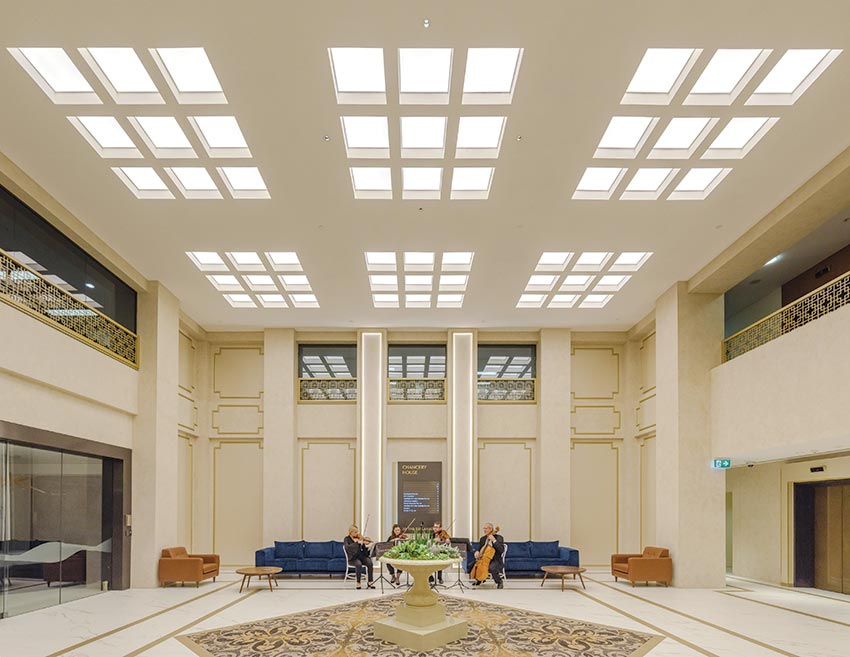
Photo courtesy of USG
High-performance acoustic solutions can improve the sound, light, and comfort of an indoor space.
Sound, Noise, and the Indoor Environment
Sound is everywhere, and we hear sounds from many different sources throughout our daily lives. In its most basic sense, vibrating objects, which in turn cause a slight change in the air pressure, produce sound. These pressure changes travel in the form of sound waves through the air or other media, such as walls, floors, or ceilings, and are eventually detected by the listener’s ear and interpreted by his or her brain as information, or specific sounds. Sound is what we hear. Noise, on the other hand, is unwanted sound. And even relatively quiet noise can be distracting.
Noise in an indoor environment can cause any number of different problems depending on what the space is used for, who is using it, and how long the noise is present. Three common situations include excessively loud noises, prolonged exposure to loud noise, and uncontrolled noise. Each of these situations can impact people in negative ways.
Exposure to excessively loud noise, such as a blast or extremely loud music, can cause physical damage to the ear as well as psychological distress to the listener. Everyone is unique, and so the noise will impact people differently, but by and large, excessively loud noise tends to have negative health impacts. At the most extreme, exposure to high levels of noise can cause either a temporary change in hearing, temporary ringing in the ears (tinnitus), or, if combined with prolonged exposure, permanent tinnitus and/or permanent hearing loss. In addition to the physical impacts, excessively loud noise can be physically and psychologically stressful. This stress, in turn, can reduce a person’s workplace productivity, interfere with their ability to communicate and concentrate on the job, and can even impact their safety if the situation makes it difficult to hear warning signals.
Interior Sound- and Noise-Reduction System Attributes
Modern acoustic design solutions provide a range of noise- and sound-control options to suit just about any project. For example, some products focus on affordable, high-quality noise-reduction solutions that are easy for contractors to install, thus removing the need to hire and schedule specialist installers for specialty products. Other systems emphasize sustainable materials that help projects achieve green building credits, all while contributing to a healthier indoor environment. And yet others focus on flexibility, both for installation and practical day-to-day use. As an indoor feature, acoustic solutions also provide important fire protection, with certain products including this as a foundational element. Regardless of the product, most new acoustic solutions are designed either to be a thing of beauty in and of themselves or as a “blank slate” to allow designers to add the interior’s aesthetic in whatever way they desire, depending on the project goals.
Ceiling and Wall Systems
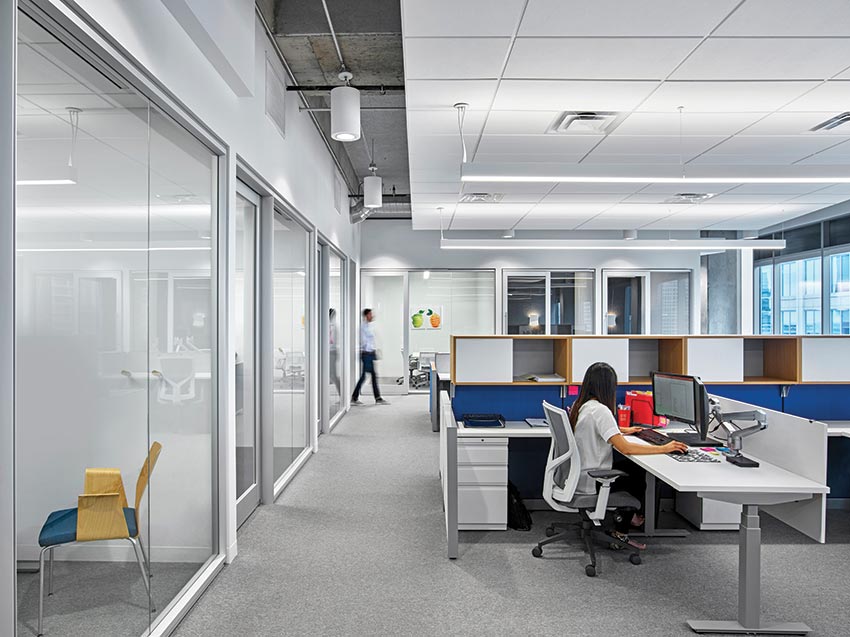
Photo courtesy of Rockfon
Modular acoustic ceilings can provide high sound-absorption performance and contemporary design in open offices where distractions would otherwise decrease productivity.
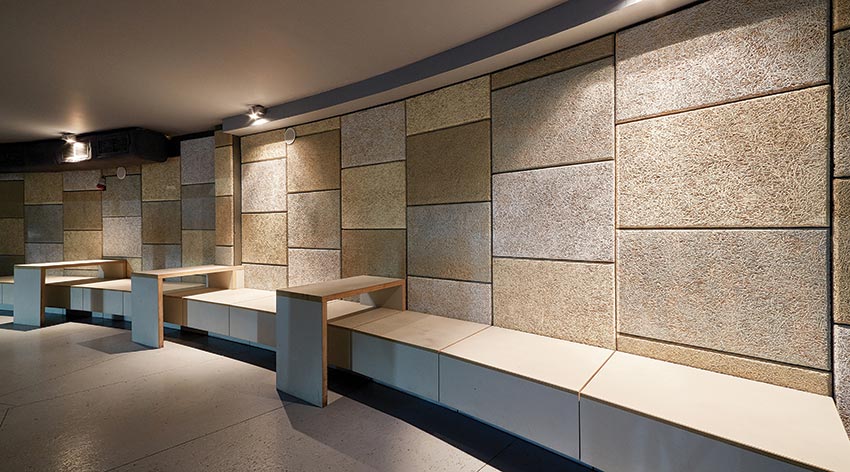
Photo courtesy of Acoustical Surfaces
Cementitious wood-fiber acoustic ceiling and wall panels are a high-performance and cost-effective option that can be designed to fit nearly any decor.
With many new interiors leaning toward open spaces with high ceilings, often with cement walls or other minimalist features, noise quickly becomes a challenge. These noisy environments can be tempered with acoustic solutions that include a combination of ceiling panels and acoustic walls, although some spaces may require only ceiling systems. Of the available systems, modular acoustic ceiling panels or tiles are one of the most widely used, effective, and affordable acoustic solutions on the market, in part because of their versatility and modern design aesthetics. Ceiling panels can be made from a range of materials and in different designs. Some common materials include stone wool, cementitious wood fiber, and drywall (often referred to as gypsum board, plaster board, or sheetrock). However some projects, such as performance halls, use special wood paneling for both ceilings and walls.
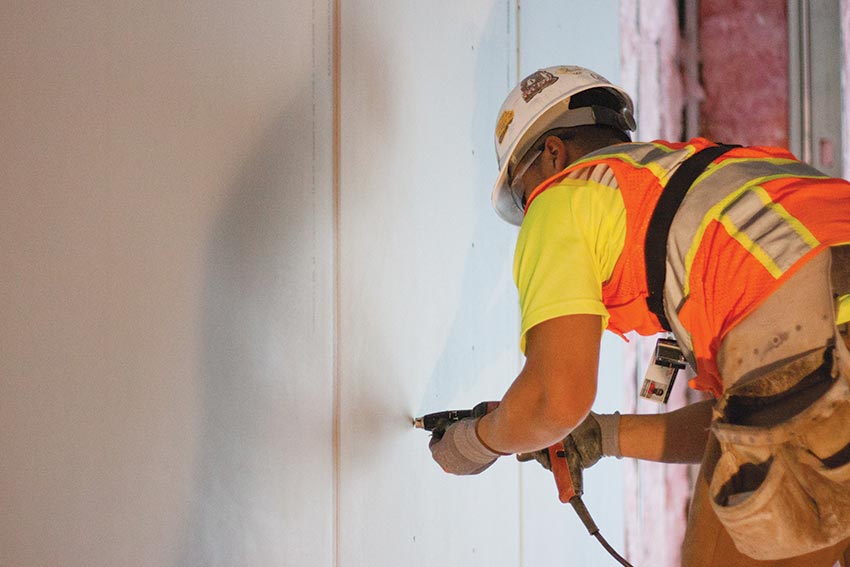
Photo courtesy of PABCO Gypsum
Sound-reducing gypsum drywall can be installed exactly like standard drywall.
In addition to traditional ceiling tiles or panels, baffles and luminaires provide a more aesthetically interesting option for sound and noise management. As with tiles or panels, they can be made from different materials, including textiles such as polyester.

Photo courtesy of USG
Acoustical drywall ceilings are installed like drywall and sprayed to have a monolithic look.
Of the many available materials for ceiling panels, stone wool panels with suspension grids and accessories can be used to absorb sound in order to create comfortable and productive office spaces, quiet and private health-care suites, cinema theater interiors, and overall aesthetically beautiful interiors.
Acoustic ceilings and wall panels come in many different materials, shapes, and sizes, including cementitious wood fiber, which adds both sustainability and thermal insulation to product characteristics. These easy-to-install panels can be used in any venue where cost-effective acoustic products are specified.
Yet other projects, such as hotels or health-care facilities, require an affordable, easy-to-install solution, such as sound-reducing, gypsum drywall that can be installed exactly like standard drywall while also providing exceptional sound-transmission management. Benjamin Shafer, a technical services manager of acoustic systems at PABCO Gypsum, notes that “sound-damping drywall is an effective and efficient way to achieve high sound-isolation performance without sacrificing valuable floor space.”
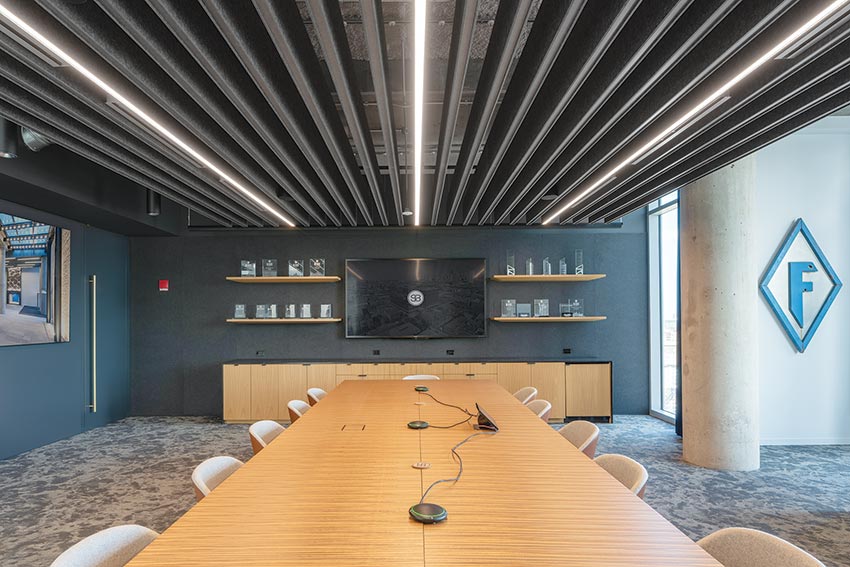
Photo courtesy of Focal Point
Integrated acoustic lighting and baffle systems can manage sound in a room and improve the overall indoor experience.
Alternatively, seamless, sound-absorbing acoustic plasters, thin perforated gypsum board, and sprays can provide affordable solutions. With these options, architects and designers can easily integrate sustainable, sound-absorbing products into their projects.
Another cost-effective and high-performance option includes acoustical drywall ceiling and wall solutions. These new breakthrough acoustical systems are installed and finished similar to drywall but provide excellent acoustics with a smooth, monolithic look. Custom colors, direct-mount ceiling and wall system options are also available.
Finally, other acoustic solutions can do double-duty to control sound, all while supplementing the daylighting of the space, thus making the indoor environment lighter, brighter, and quieter, all of which can help improve how occupants work and learn. Acoustic luminaire and baffle systems can easily be integrated into a space to provide sustainable sound absorption that works to improve the comfort and indoor experience of occupants of commercial spaces.
Specialty Walls and Door Assemblies
While ceiling and wall solutions can be used for the majority of projects, some spaces simply require a different take on acoustics, such as interiors with versatile, dynamic rooms that can be used for different purposes throughout the day. Such spaces benefit from nontransitional design solutions to manage acoustics. Doors and door assemblies are another important consideration in an interior’s acoustic management system; a perfectly designed interior space without an equally well-considered door system can translate to intrusive sound coming into or out of the room, and more or less undo all of the other work.
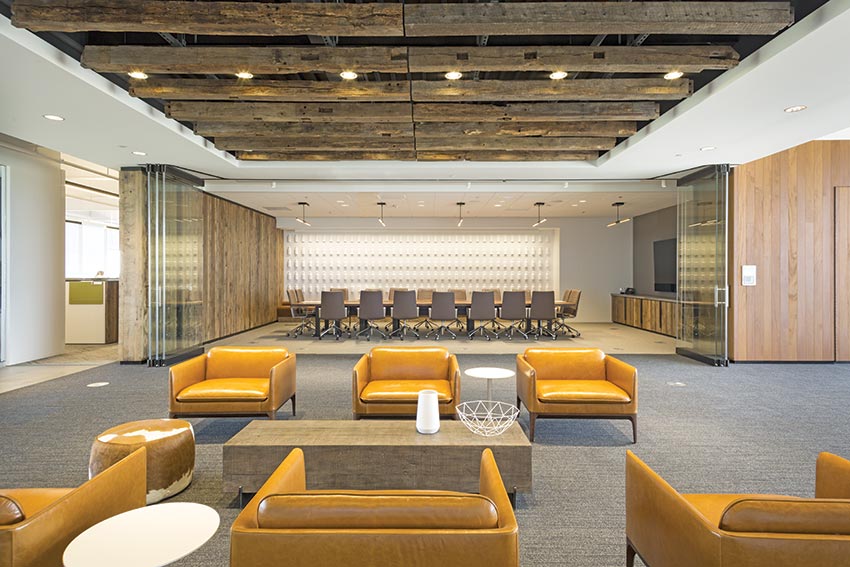
Photo courtesy of NanaWall
The Dairy Farmers of America’s new headquarters features acoustic glass walls that offer privacy from sound all while maintaining a bright, light, open space.
Some spaces don’t require acoustic support all of the time, and instead can benefit from acoustic barriers that can be folded away when they are not needed. Libraries and offices, for example, now frequently have flexible meeting spaces that can be either open or closed off with sliding glass walls. These designs can also be used in VIP rooms of event venues, allowing guests to see the event within the quiet privacy of their own space.
Acoustic openings such as doors are referred to as assemblies, which include the door, doorframe, and seal system (perimeter seal, door bottom, threshold, and astragal at paired openings). The acoustic quality of door assemblies plays an important role both in blocking unwanted noise from entering a space and containing sound so that it does not cause unwanted noise in public spaces. These assemblies also contribute to the quality of the sound within a space. These functions are critical for not only performance halls but also hospitals and schools, whether occupants need quiet for their recovery or learning. Acoustic doors and steel doorframes can also provide rated fire control.
Common Indoor Environments that Need Sound and Noise Control
Where exposure to excessively loud and prolonged noise typically impacts workers in the manufacturing sector or in other industrial settings, uncontrolled noise can happen in just about any indoor environment. Classrooms, lecture halls, offices, retail spaces, restaurants, hotels, hospitals—any indoor space where people live, work, or play—all rely on having noise controlled in some way or another. Noise can reduce employee concentration, which in turn impacts their productivity. Noise can also make it difficult for kids to learn in their classrooms. And, in a more extreme case, noise can reduce healing times for patients in hospitals.
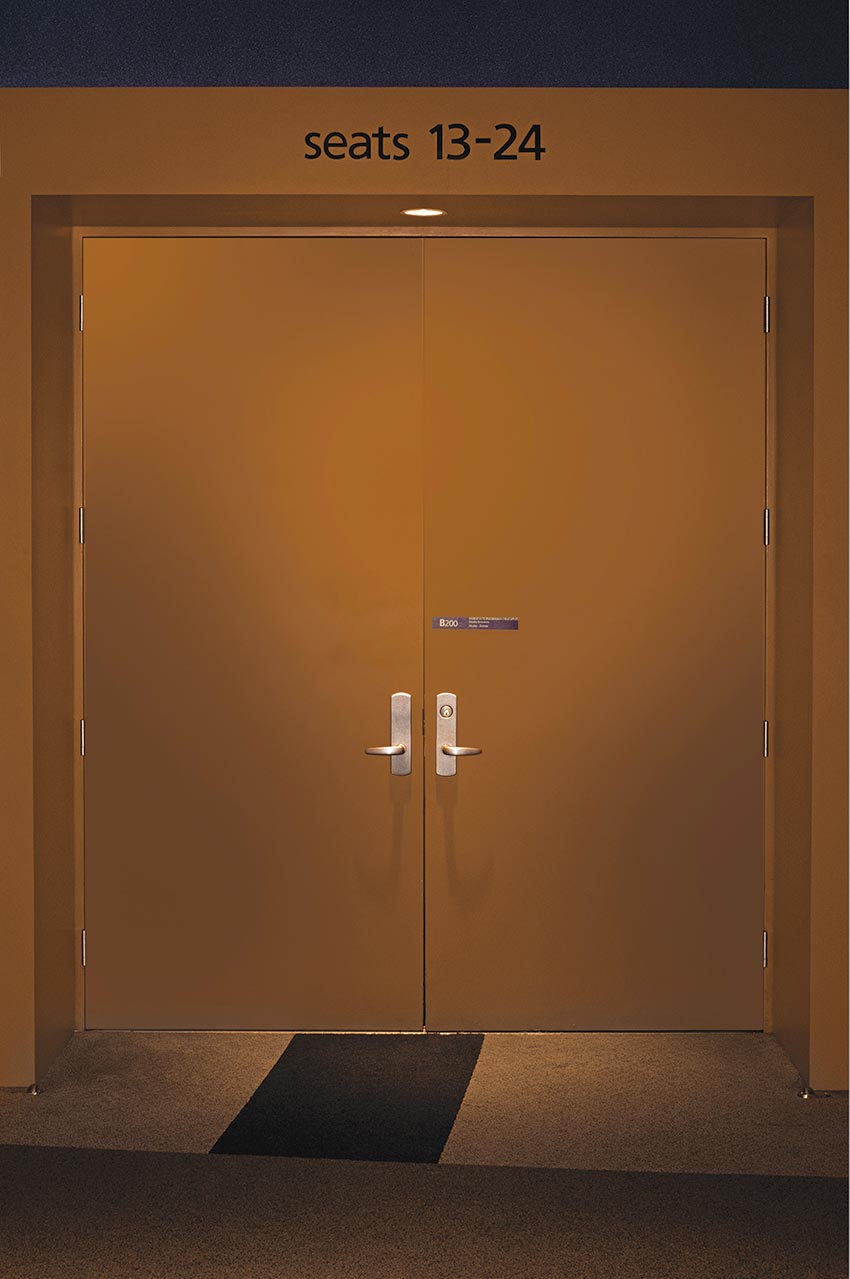
Photo courtesy of AMBICO
Soundproof doors with specialty steel frames control noise while adding rated fire protection.
Even if the noise isn’t actually loud, it can be a big problem. In schools, for example, uncontrolled noise can directly impact how well young children learn not just content but also language and literacy skills. If they can’t hear the teacher, they will be less likely to pay attention, and therefore less likely to learn. The issue is so important that in 2002, a new standard for classroom acoustics, ANSI/ASA S12.60-2002, was set to help planners and designers create more acoustically sound spaces for children. Adults also have trouble when working in environments where the sound is not well controlled. Office noise, whether intermittent or even quite, can be enough to distract employees and lower their productivity. In extreme cases, when the noise is continual, it can make it hard to concentrate and add stress to the workplace, which in turn can make some employees irritable and can even increase blood pressure.
Retail and commercial spaces also require properly managed noise. Restaurants in particular have multiple sound and noise sources that can become problematic if not controlled. Kitchen noise, plates clanking, patrons talking, music, and in some cases TV can all add up to a situation where patrons can’t hear the person sitting next to them and wait staff can’t clearly hear patrons. Both customers and employees can suffer in this sense, and that can impact business in many ways. The same holds true for other commercial spaces. Poorly managed noise and sound between hotel rooms, for example, can ruin a guest’s experience; however, a perfectly quiet room that blocks out street noise and sounds from the rest of the building will be highly valued.
Large event spaces such as sports arenas have special challenges in controlling noise. While the larger venues have their own goals—often where the crowd noise is part of the experience—private VIP rooms or “boxes” where the event can be watched in comfort and relative quiet away from the crowds is another matter. Architectural projects that have to balance different noise requirements depend on unique acoustic solutions that allow for visibility along with noise control.
Performance spaces, whether concert halls or theaters, all require precise acoustic design. In these spaces, especially concert halls, sound is what people are there to experience, whether in the form of music or spoken voice. An acoustically flawless space will be noticed and celebrated—but a space where outside noises or echo from inside sounds disrupt the performance can ruin the experience.
Finally, spaces such as hospitals and clinics also rely on noise being well controlled, not only for patient privacy but also patient health and well-being, such as in overnight hospital rooms. Health-care facilities present a unique challenge in that they are typically designed with easy-to-clean flooring and wall materials, such as ceramic tiles and stainless steel. When these materials are combined with the sounds of medical equipment, footsteps, voices, and intercom alerts, noise can become quite loud, interrupting patients throughout their stay. In this case, unwanted sounds and noise can impact healing times and a patient’s ability to rest and recover.
Modern acoustic design solutions range from simple, easy-to-install panels that can help designers meet their goals on time and within budget to elegant, complex solutions to address the most challenging acoustic problems in the industry, such as high-end performance spaces, private areas within larger event venues, and everything in between. The key to success in this aspect of a building project is to understand the intended use of the space and how sound- and noise-management systems can make the indoor environment as comfortable as possible.
The Science of Sound and Sound Management
Sound generation, including how it is measured and the different ways that acoustic design solutions can reduce, absorb, and mitigate the potential damage and distraction of uncontrolled and unwanted sound, are all important to understand before getting into a sound-management project. There are six key aspects relevant to sound-management specification that can help create a foundation for selecting high-performance acoustic solutions. They are: acoustic performance, fire safety, sustainability, occupant health and well-being, design flexibility and customization, and accessibility after installation. These aspects contribute to different certification programs and standards, whether for sustainability, health, safety and well-being, or fire ratings—all of which are relevant for interior acoustic products.
The science of sound and sound management is at the heart of designing indoor spaces that enhance rather than detract from the indoor experience in terms of managed sounds and noises. When we talk about the science of sound, we’re referring to acoustics, which is the scientific study of sound in all of its forms. In architectural design, acoustics is concerned with how sound functions both within and between architectural spaces; for example, how sound functions within one room as well as between rooms, whether through walls, ceilings, or floors. But architectural spaces are rarely empty; they are usually filled with furniture, fixtures, and other objects, all of which interact with sound. As such, acoustics also needs to take into account how sound is reflected, absorbed, or scattered in a space.
Sound waves will behave differently depending on the surfaces in the space. For example, highly reflective surfaces such as bare walls and uncarpeted floors will redirect the direction of the sound, and so the sound can take longer to get from its origin to the listener. An echo is an example of such a delay. On the other extreme, a space that has highly sound-absorptive surfaces will decrease the reflected sound waves and thus reduce potential reverberations and echoes. Finding a balance between reflective and absorptive surfaces can be a challenge, especially in some spaces. That balance needs to stem from the intended use of the room and consider whether privacy is needed, sound needs to carry, or the space needs to be genuinely quiet. We’ll talk more about some of the design options and different acoustic solutions that can be used to address these issues in the next section. But first, let’s go over some important terms.
Key Terminology for Understanding Sound and Sound Ratings
Sound is measured in two ways: its loudness is measured in decibels (dB), and its frequency is measured in hertz (Hz). Combined, these two measurements are at the foundation of how sound management systems operate. But it’s a lot more complicated than just decibels and hertz, especially when it comes to specifying architectural materials that manage sound and noise within spaces.
Noise-reduction coefficient (NRC) is the measurement of how well a material absorbs sound, usually sounds in the range of normal speech frequencies. On products, NRC is usually measured at frequency octave ranges of 250, 500, 1000, and 2000 Hz, and those measurements identify how much a product will make a space quieter at that frequency ranges. Large spaces where sounds and noises are generated, such as gymnasiums, sports arenas, restaurants, or performance halls, will require a higher NRC on walls and ceilings to control the noise.
Sound transmission class (STC), on the other hand, measures how well a surface blocks sound from going through it, or how well a product keeps sounds from escaping a room. Spaces such as medical clinics, hospital rooms, or office conference rooms where private or sensitive information may be discussed will benefit from walls designed with high-STC products, as covered by the ASTM E90 standard.
Reverberation, or how long a sound continues to reflect off of hard surfaces within a space, is measured in reverberation time (RT). RT is measured as the time in seconds that it takes for the sound level to decay by 60 dB. From a practical standpoint, a long RT is responsible for situations where communication is garbled and difficult for listeners to understand, also known as speech intelligibility. Some spaces, such as classrooms, benefit from very short RTs (less than 0.6 seconds) in order to emphasize clarity and speech intelligibility, while others, such as performance halls and theaters, benefit from RTs of greater than 1.2 to help the sound fill the space.
Articulation class (AC) measures the attenuation, or how much sound energy is lost, of reflected sounds, such as speech over the top of wall partitions or furniture, and is measured according to ASTM E1110 and E1111. For example, high-performance AC is important in office areas that rely on cubicles. AC ceiling systems rated 150 or less are considered low performance, where systems that are rated 180 or greater are considered high performance.
A final acoustic performance measure is the Privacy Index (PI), which rates how well speech can be heard in and through architectural spaces, especially spaces such as hospitals and offices. Key PI levels are generally accepted to be 95 percent or higher for confidential speech privacy, 80 to 95 percent classifies as “nonintrusive” privacy, and anything below is accepted as poor or not private.
Acoustic Solutions for Sound Management and Aesthetics
In today’s market, there is a wide range of high-performance acoustic design solutions that address an equally wide range of acoustic challenges. We will cover different types, styles, and attributes of acoustic solutions, including shapes, sizes, and finishes, as well as the various materials and material properties of different acoustic solutions. This includes multilayered gypsum panels and textured sprays to glass, stainless steel, wood and steel doors with steel frames, and different types of ceiling tiles and baffles.
In addition to the practical aspects of new acoustic designs, the different products offer architects and designers a world of creative options for aesthetic flexibility. This flexibility extends from traditional ceiling and wall solutions to doors and doorframes, with an array of colors, shapes, sizes, and patterns available—all delivering high-performance acoustic control that improves the comfort and beauty of the space. In addition to the flexible products, recent advances in modular design offer almost unlimited possibilities for layout to best fit the required space. Other designs incorporate daylighting quality with their sound- and noise-control solutions, and many are fire rated to provide added safety within the space. We’ll take a look at each one now.
Stone Wool Ceiling Panels
Sound-absorbing ceiling systems can optimize acoustics and add to the comfort and aesthetic design of an indoor space. For projects where a creative, flexible look is desired, stone wool ceiling panels installed on specialty metal ceiling panel suspension systems can be a great choice and address some of the newer, stricter requirements in acoustic standards. As Acoustics Specialist Gary Madaras, Ph.D., of Rockfon notes, “A lot has changed in the acoustics realm recently, especially in regards to the stringency of both sound-absorption and sound-blocking requirements in the standards. Ceilings have to provide high sound absorption to meet shorter reverberation times, and full-height walls and heavy slabs are needed to provide privacy and prevent noise intrusion.”
For example, optimized acoustics in commercial interiors typically include high-performing sound absorption overhead, which helps protect materials from dirt and damage. Regardless of the interior, acoustic ceiling systems should not be seen as a way to compensate for the poor design of other building elements, such as floors, walls, and mechanical systems. A well-designed interior should meet the requirements for privacy between enclosed rooms, and mechanical systems should meet maximum permissible background noise levels: acoustic ceilings can be removed and replaced with different types of sound absorption.
Industry literature shows that an absorption performance level of NRC 0.90 or higher is required in workplaces and patient-care areas of health-care facilities. This minimum performance level has been adopted for open offices by some standards, guidelines, and building rating systems, such as The WELL Building Standard v1 and the U.S. General Services Administration’s (GSA) Facilities Standards for the Public Building Service (P100). The Center for Health Design establishes installing high-performance sound-absorbing ceiling tiles as a priority design recommendation based on its impact on safety, quality, and cost.
Not all spaces require this high level of sound absorption. Most ceiling manufactures provide multiple options within standard performance levels. The most important factor to remember when it comes to acoustic ceilings is that they are for sound absorption within spaces and too lightweight and porous to be effective at blocking sound.
Cementitious Wood Fiber Ceiling and Wall Panels
Acoustic ceiling and wall panels can be made from many different materials, each of which provide certain properties that can benefit an indoor environment. Cementitious wood-fiber offers an acoustical high-performance, ecofriendly option that is also cost-effective and provides additional thermal insulation to the space. As a material, cementitious wood-fiber is remarkably simple, with three key ingredients: managed source wood fibers, cement, and water. The finished panels are durable, fire rated, and low VOC, making them a safe and healthy option for interiors. Panels are also versatile in terms of size, shape, mounting options, and even paint options, which makes them easy to specify, and their thin design makes them easy to install.

Photo courtesy Acoustical Surfaces
Shown are ceiling and wall cementitious wood fiber panels.
As an acoustic solution, cementitious wood fiber panels provide designers with an aesthetically creative option that typically has a consistent finish and color as well as consistent thickness, square corners, and low-dust square panels. These panels are designed to effectively manage sound in larger spaces where noise is typically a challenge, such as in schools or civic centers—for example, in gymnasiums and classrooms, auditoriums, or music practice and band rooms. They are also an excellent option for commercial venues such as restaurants and bars, convention centers, and even “extreme noise” environments such as manufacturing and industrial facilities, among many other noisy, high-traffic spaces.
Sound-Reducing Drywall
Sound-reducing laminated gypsum drywall is an affordable, easy-to-install acoustic solution. The material can replace any standard drywall in either walls or ceilings, and it can use standard construction techniques to achieve high STCs. This is beneficial because it avoids the common issues of decoupling walls or difficult installation that contractors often face with some of the noise-control solutions; such problems tend to mean that the desired result is not achieved.
Sound-reducing gypsum panels can be cut and mounted like any other drywall panel, with the only real difference being that these panels are “internally damped” with constrained layer-damping layers inside. Different performance grades are available, including a standard 5/8-inch type X panel, which is the same size as standard drywall.
The combination of high performance, easy installation, and overall low cost works well for projects where time and budget are of key importance. As noted by Matthew Boersma of HerreroBOLDT Partners, “After completing our analysis, it was clear that sound-damping gypsum drywall would be the best solution to achieve the required STC performance, at the lowest cost, for the Cathedral Hill district campus. Additionally, using sound-damping gypsum drywall standardizes the wall dimension and reduces variability for other in-wall systems like doorframes and receptacle outlets.”
Acoustic Plasters and Perforated Gypsum Board
According to Howie Podolsky, general manager of Pyrok, in many interior spaces, “it is necessary to address mechanical system noise, sound transmission, impact noise, and sound-absorption issues. Too often, all four of these critical acoustic issues are not addressed.” Sound-absorption issues can be addressed with perforated gypsum boards with different perforation patterns that can be joint-taped to create high-performance, durable acoustic solutions or acoustic sprays. Two such sprays available are seamless, durable sound-absorbing wall and ceiling treatments constructed from hand-applied smooth and textured sprays. These sprays, made with a special sound-absorbing substrate comprised of recycled post-consumer glass, offer a sustainable, durable, safe, and healthy acoustic option that can have almost zero VOC content. Designers can use this product to achieve the look of a seamless gypsum board but with acoustic properties. The material can be used in whatever way gypsum boards are used, including curved surfaces and compound curves, with the advantage that no gypsum board substrate is required. Moreover, such products can be painted without losing any sound-absorbing qualities.
Another option is an acoustical plaster spray made with portland cement, and that can be applied to unpainted concrete masonry, galvanized metal deck, and structural steel. These plaster sprays can be used wherever a designer might otherwise use a decorative plaster finish, but they also absorb sound, are durable, and require very little maintenance. This combination of attributes provides architects and designers with aesthetic flexibility whether the interior is contemporary, traditional, or even a historical restoration. One benefit of the plaster spray is that it can be applied in different thicknesses depending on the desired acoustical result.
Acoustic Drywall Ceiling and Wall Systems
One way that designers can balance their aesthetic vision of a space with eventual occupant comfort is to include acoustics as a critical requirement very early in the project’s design process. Acoustic needs—and eventual solutions—should be considered a key design decision, just as important as materials, performance, and aesthetics. By addressing the issue of acoustics early in the process, designers can better plan for materials and products that best suit their budget and deadline needs as well.
For architects and designers seeking modern, monolithic ceilings, acoustics can be a genuine challenge. Sounds can easily bounce off of the surfaces, reverberating and echoing, thus making listening difficult. New advances in acoustical drywall ceilings, however, offer systems that can be sprayed to have a monolithic look, all while costing less and being far easier to install than acoustical plaster. These high-performance solutions can also provide high light-reflective finishes that can enhance interior lighting, thus reducing energy use.
Acoustic Luminaire and Baffle Systems
Acoustic linear luminaire and baffle systems combine noise control with lighting control. Linear luminaires, for example, can provide a modern look with ecofriendly and sound-absorbing housings. They are offered with direct, indirect, or both direct and indirect light distributions, thus ensuring not only improved acoustics within a space but also optimal illumination levels. With the integration of lighting controls, these acoustical lighting products can also reduce energy costs. Unlit acoustic baffles provide an aesthetic match to the lit baffles, adding to the overall flexibility to meet a project’s budget, aesthetic, lighting, and acoustic needs.
Acoustic luminaires and baffles can be used to create unique, project-specific aesthetics in conference rooms, offices, reception areas, and other open commercial spaces. The thin profiles of the acoustic baffles maximize illumination and minimize shadows. In addition to standard linear acoustic baffles, acoustic pendants can be used in larger interior spaces where noise may be a problem, such as in airport concourses, large lobbies and reception areas, or conference rooms and open workspaces. Acoustic pendants can be used in conjunction with lighting systems to create bright, comfortable, healthy, and coordinated interior spaces.
Folding and Opening Glass Walls
Glass walls can serve as excellent acoustic barriers when they are closed; however, such walls have traditionally been installed as permanent fixtures to a space. New designs in floor-supported folding glass walls, however, combine the modern aesthetic of acoustically separated aluminum framing and specialized gasketing with sound-enhanced glass. These new high-performing systems can achieve STC levels ranging from STC 35 to 45. Aside from the versatility of these glass walls, they provide educational and interior spaces with easy-to-create private rooms. The floor-supported steel framing, for example, makes opening and closing the walls easy for anyone to do.
While not all spaces benefit from a folding wall, another option is an all-glass opening wall that is engineered specifically for enhanced acoustical separation. Opening glass walls can turn larger spaces into on-demand smaller spaces, all while keeping the space visually open. Such walls can perform better than many all-glass fixed partitions, with STC ratings around 36 and outdoor-indoor transmissions class (OITC) of 30. All-glass opening walls can change the noisy nature of office spaces, banks, and schools with uninterrupted transitions between interior spaces.
Acoustic Door Assembly Products
As noted earlier, a space that requires high-performance acoustic management also needs to have carefully specified doors and doorframes. Both are critical elements in an acoustic space in that they not only block sound but also play a key role in fire safety. Two design solutions include acoustic steel and acoustic wood doors with steel frames.
Acoustic soundproof wood doors with steel-frame assemblies can provide an excellent solution to noise issues in buildings such as schools and health-care environments, where noisy corridors may distract people within spaces like classrooms, exam rooms, or patient-care rooms. In addition to the aesthetics of wood-faced doors, these doors and assemblies can provide the broadest range of STC ratings in the industry, all tested with ASTM E-90 and E-413, and fire rated up to 90 minutes. Heavy-gauge, pressed-steel frames and engineered perimeter- and bottom-seal frames help reduce unwanted noise.
Acoustic Solutions at Work
The following featured case studies demonstrate creative and effective design solutions that include high-performance acoustic solutions.
Conclusion
Noisy indoor environments can negatively impact occupant experience from simple distractions that make working and learning difficult to continual distractions that increase stress and even decrease healing time for patients in hospitals. In environments where sound is the main feature, such as performance halls, unmanaged noise can make a space unusable.
Architects and designers who consider a project’s acoustic needs in the early phases of the design process can better ensure that the space will function as desired from an acoustics standpoint. Modern acoustic-management products and systems make it easy for architects and designers to meet their design and budget goals, with options that include everything from acoustic drywall ceiling and wall panels that can be installed like standard drywall to soundproof door assemblies or flexible glass walls. The design options encourage aesthetic creativity and work toward creating healthy, safe environments that support occupant comfort and well-being.
Rebecca A. Pinkus, MTPW, MA, is a Toronto-based communication consultant, writer, editor, and historian of technology. She has been writing for the green build industry for several years, contributing to more than 40 continuing education courses and publications through Confluence Communications.















